i'm using a webservice to add value inside my database, normaly my query should add only one row but actually it had multiple identical rows.
So here is my 2 tables :


My query:
INSERT INTO Details
(SecurityKey, Name, URL, DateLog, Level, Message, Username, ServerName, Port, ServerAdress, RemoteAdress, Logger, Exception, ApplicationID)
SELECT
@SecurityKey, @Name, @URL, @DateLog, @Level, @Message, @Username,@ServerName, @Port, @ServerAdress, @RemoteAdress, @Logger, @Exception, @ApplicationID
FROM Details D
INNER JOIN Application A ON @SecurityKey = A.SecurityKey AND @ApplicationID = A.ID
And my webservice with @ApplicationID=14 and @SecurityKey="shSfnDOIPM":
{
"DateLog": "27/02/12",
"Level": "danger",
"Message": "ytry",
"Username": "ghth",
"ServerName": "zrzrzer",
"Port": "80",
"ServerAdress": "36zr",
"RemoteAdress": "12z",
"Logger": "rg",
"Exception": "zr",
"ApplicationID": 14,
"Name": "zr",
"SecurityKey": "shSfnDOIPM",
"URL": "wwww",
}
Normaly with these informations my query should sort only one row but as you can see in the "Details" picture, it create many and many rows...
Thanks for helps